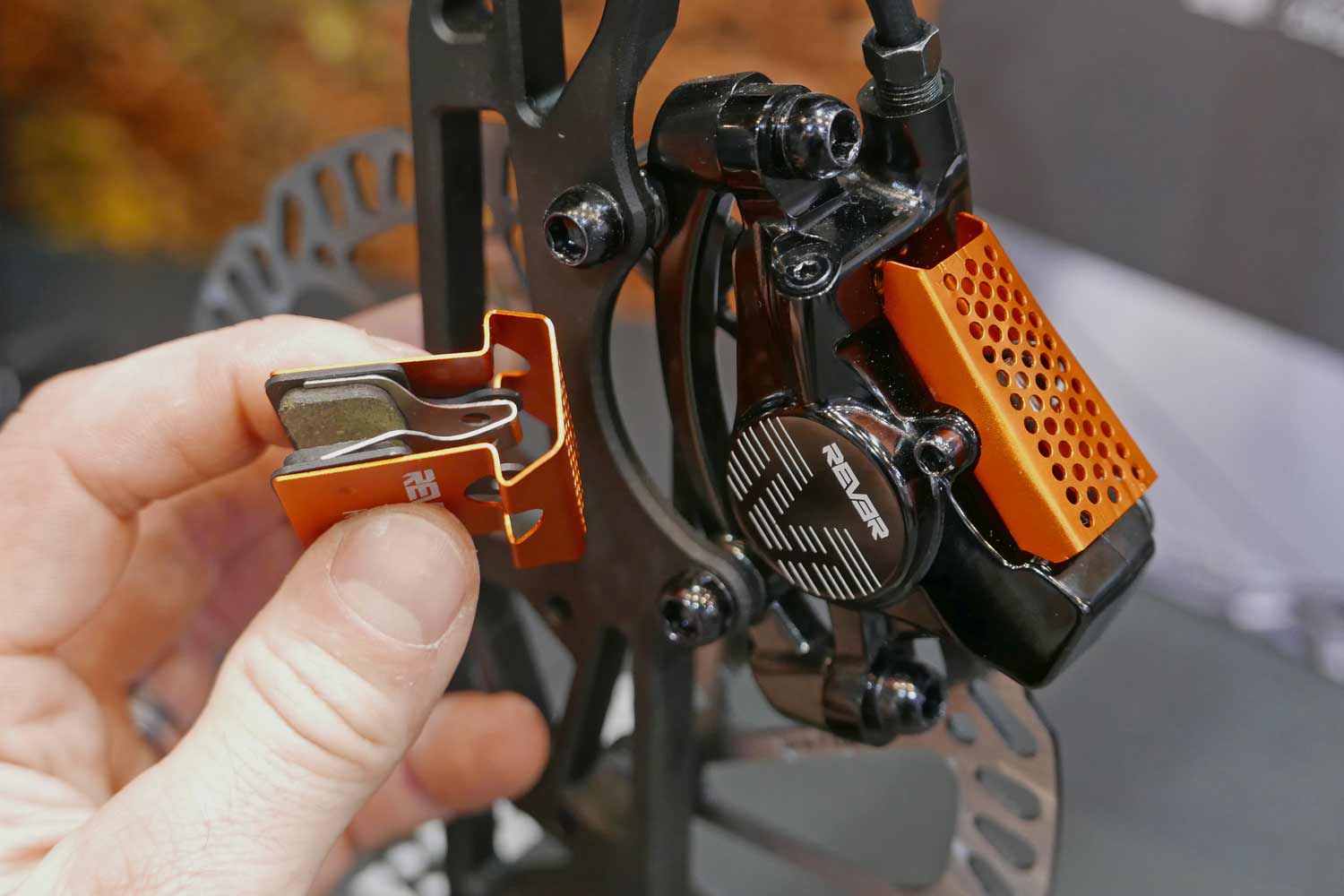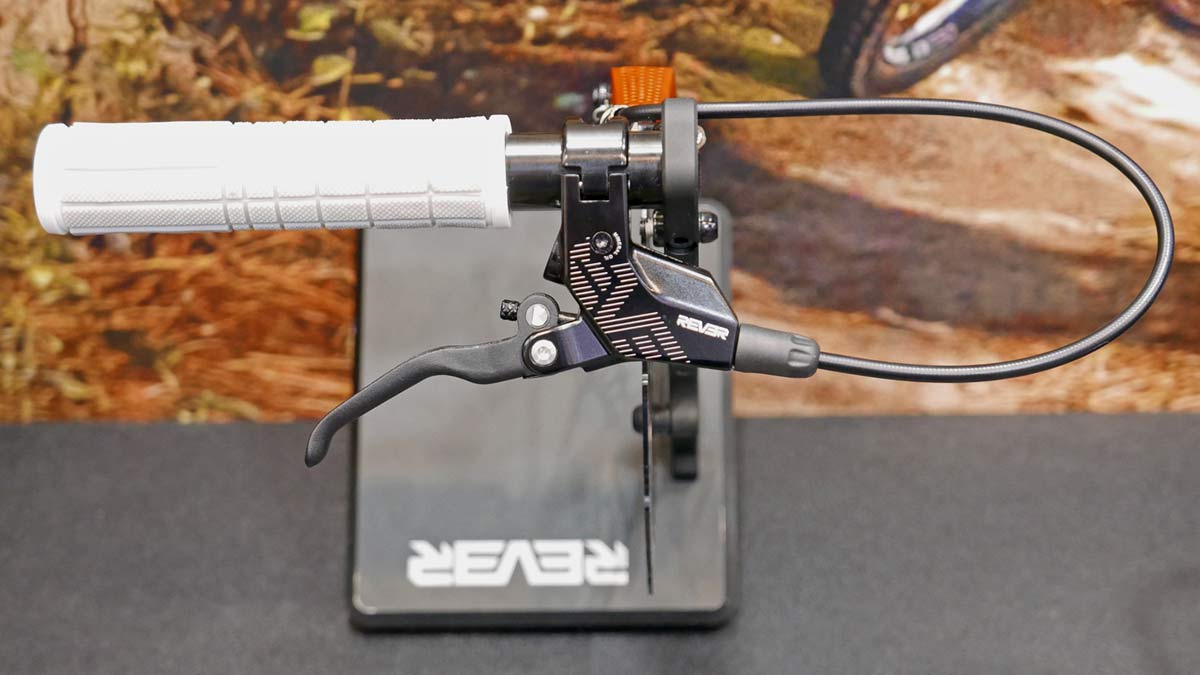Following their mechanical disc brake debut, Rever is expanding with two families of hydraulic disc brakes – the Arc & Attack – both offering affordable pricing, powerful braking & plenty of options. Beyond simply developing budget brakes, Rever also has a new heat dissipating brake pad design that can be added onto any of their brake systems, or even to a number of Shimano brakes.
Rever Attack affordable MTB hydraulic disc brakes
A few years back, brake brand Rever sprouted up with mechanical disc brakes out of the same people who were bringing us Jagwire cables & shift/brake accessories. The idea from the start was to offer solid braking performance at affordable pricing. That looks set to expand heavily this year into hydraulic braking with two new Attack & Arc families of brakes for mountain bikes, flat bar road bikes & e-bikes.
The entry-level of the new line-up is the Attack mountain bike brakeset, meant to deliver simple, powerful braking for all manner of trail riding. Available with 2-finger or 3-finger forged alloy levers, the Attacks use a side-specific forged brake lever body with a hinged bar clamp, get tool-free reach adjust, and have a master cylinder that pushes mineral oil to the open system caliper.
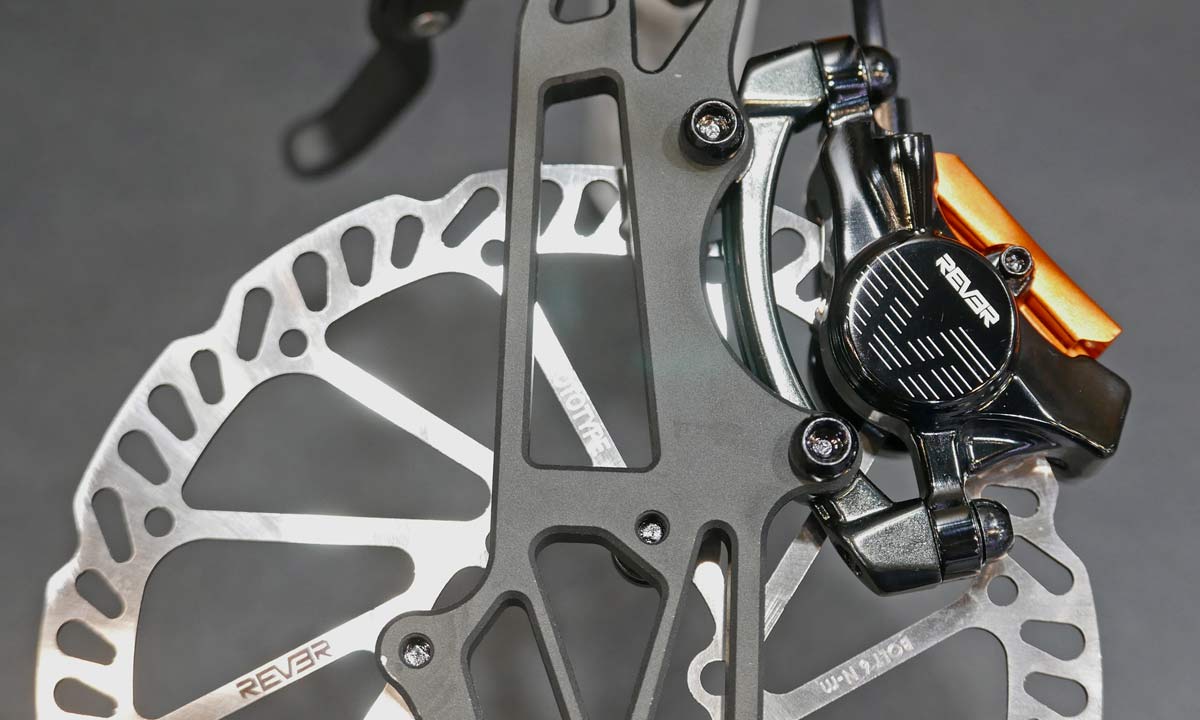 The Attack brake caliper is a simple two-piece forged alloy, two-piston body design with 22mm pistons, top loading pads, and available in a post mount for the MTB version or a flat mount for the flat bar road model. Interestingly, while the Attack-R is called a road brake, since it offers a flat mount caliper, it will likely get some traction paired with a post mount front for the crop of modern XC bikes that use a flat mount standard rear brake. Claimed weight for the 2 finger Attack is 235g, and comes with a suggested retail from $95 for lever, caliper & standard resin (non-finned) brake pads (special pads & rotors separately.)
The Attack brake caliper is a simple two-piece forged alloy, two-piston body design with 22mm pistons, top loading pads, and available in a post mount for the MTB version or a flat mount for the flat bar road model. Interestingly, while the Attack-R is called a road brake, since it offers a flat mount caliper, it will likely get some traction paired with a post mount front for the crop of modern XC bikes that use a flat mount standard rear brake. Claimed weight for the 2 finger Attack is 235g, and comes with a suggested retail from $95 for lever, caliper & standard resin (non-finned) brake pads (special pads & rotors separately.)
Rever Arc affordable MTB hydraulic disc brakes
 The Arc brake (right) is a slightly more premium setup, even though pricing is almost the same starting from $105 (without rotor or special pads), dropping a few grams down to 221g in its lightest setup.
The Arc brake (right) is a slightly more premium setup, even though pricing is almost the same starting from $105 (without rotor or special pads), dropping a few grams down to 221g in its lightest setup.
The Arc again uses a forged body & lever, offers 2 or 3-finger levers, and relies on mineral oil in an open system design at the caliper. The Arc body switches to a dual-bore bladder for the master cylinder which Rever says makes the brake lighter, more compact, and allows it to be swapped to either left or right sides of the bar. The Arc includes tooled reach-adjust, and has a two-piece bar clamp that is compatible with both I-spec II & Matchmaker shifters & dropper remotes.
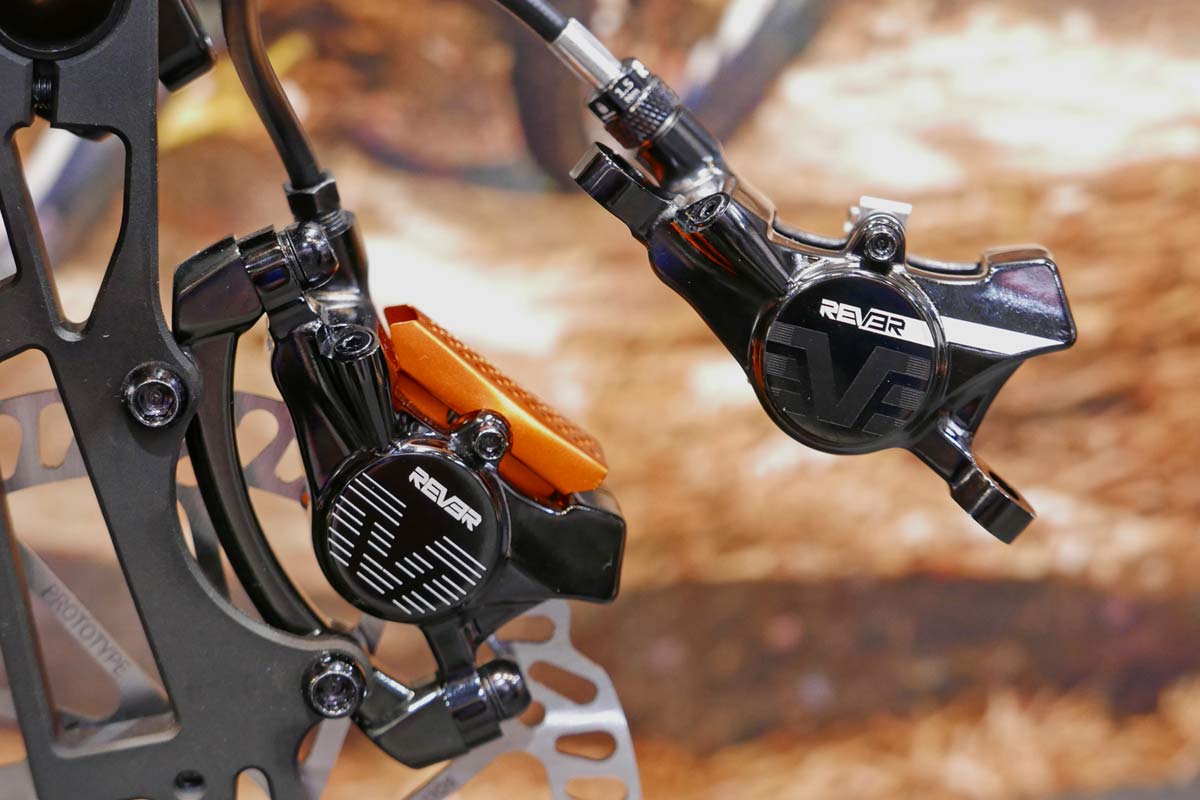 While the Arc caliper (right, without pads) looks almost identical to the Attack, it does in fact use a slightly larger 24mm two-piston design. The Arc is available only in post mount (so no Road flat mount option.)
While the Arc caliper (right, without pads) looks almost identical to the Attack, it does in fact use a slightly larger 24mm two-piston design. The Arc is available only in post mount (so no Road flat mount option.)
Both Attack and Arc also will have an e-bike specific version which will be for OEM customers. It uses the 2-finger lever, and gets an extra wired brake lever sensor to connect to e-bike drive systems.
Rever alloy Heat Dissipation cover brake pads
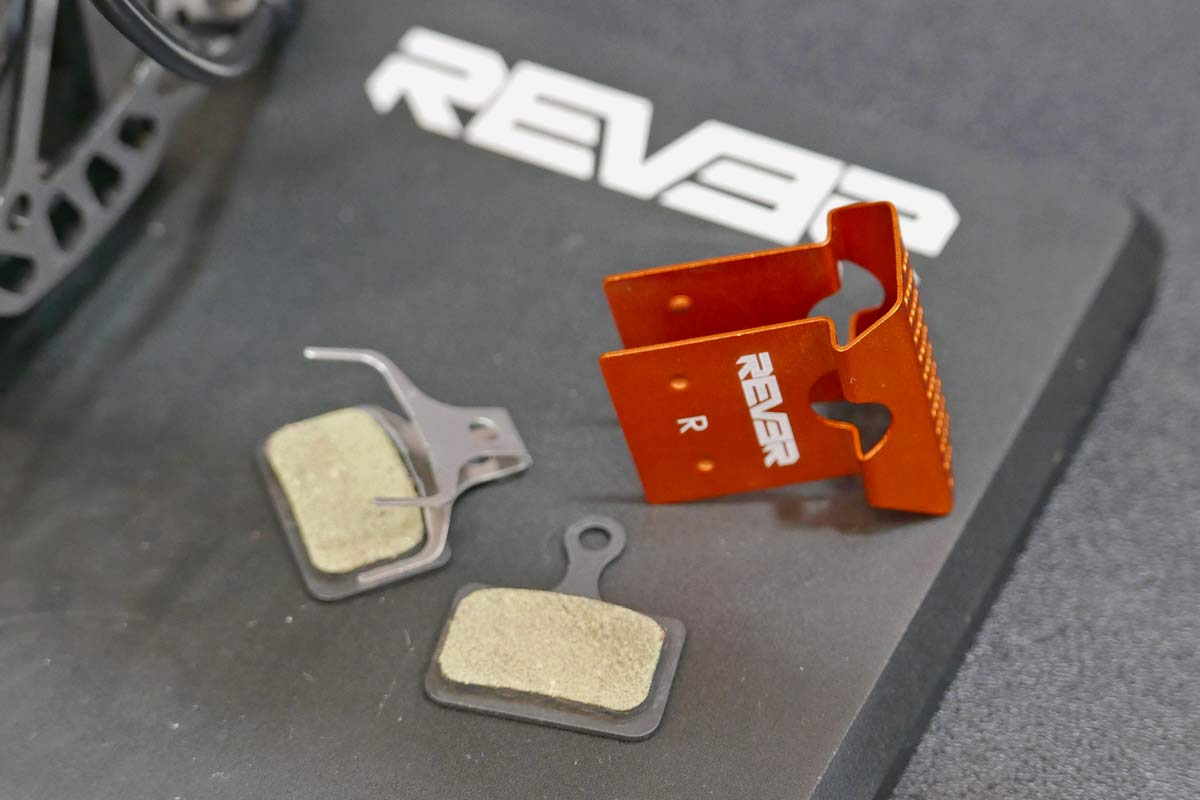 The most visually striking element of the new Rever brakes was actually those orange anodized brake pads. While some more expensive vented or finned disc brake pads incorporate alloy cooling structures into the construction of their pads, Rever took a more simple approach. Starting with the same Shimano standard brake pads that they already use in their mechanical brakes, Rever developed a thin 0.6mm thick aluminum cooling fin that fits between the 1mm thick steel backing plate of their pads & the caliper.
The most visually striking element of the new Rever brakes was actually those orange anodized brake pads. While some more expensive vented or finned disc brake pads incorporate alloy cooling structures into the construction of their pads, Rever took a more simple approach. Starting with the same Shimano standard brake pads that they already use in their mechanical brakes, Rever developed a thin 0.6mm thick aluminum cooling fin that fits between the 1mm thick steel backing plate of their pads & the caliper.
The alloy cooling fin just snaps into place behind the pad to transfer heat out of the brake caliper body and into the wind. That means that when you need to replace your brake pads, you should only need to replace the actual pad, reusing the fin.
The special Heat Dissipation Cover brake pads are available for all of Rever’s brakes: Attack, Arc, MCX & MTN1 (a post mount set of mechanical MCX calipers than come paired with their own classic MTB brake levers), plus aftermarket as replacement for brake using Shimano style pads. Rever’s MTB pads are interchangeable with Shimano M9020/M9000/M987/M985/M8000 brakes, and road pads with R9170/RS805/RS505/RS405/RS305 brakes.
Expect to see the new Rever hydraulic disc brakes popping up first on a number of MY2020 bikes this summer (even with custom colored brake pad fins), with aftermarket retail availability soon after.
